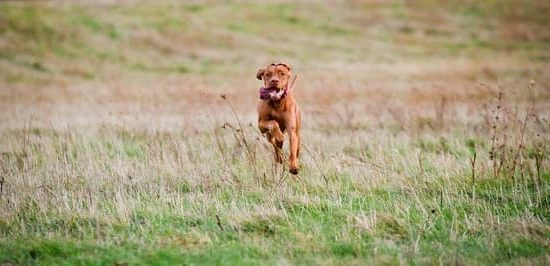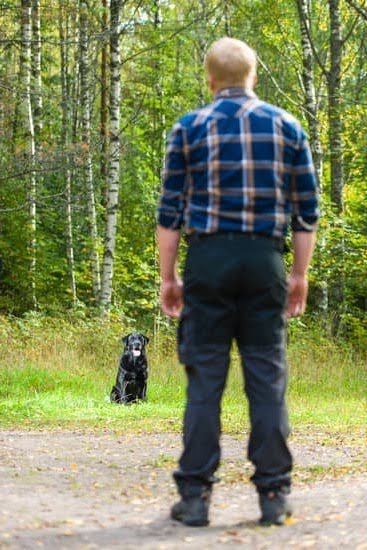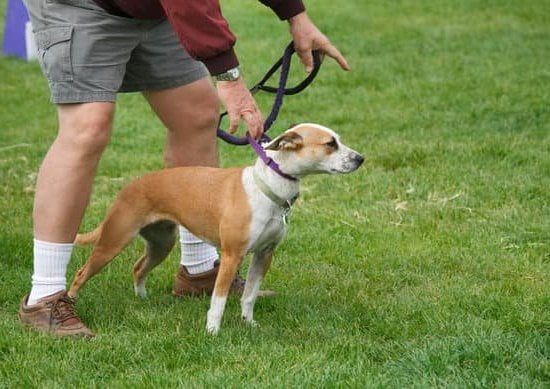Are you looking for a positive and effective way to train your dog? In this article, we will be delving into the world of dog clicker training and how you can use this method to teach your furry friend new commands, behaviors, and tricks. Understanding the basics of dog clicker training is essential for successful training outcomes, and we will cover everything from choosing the right clicker to troubleshooting common training challenges.
Using a dog clicker to train your dog is a popular and rewarding method that focuses on positive reinforcement. The sound of the clicker marks the desired behavior, which is then followed by a treat or reward. This clear communication allows for precise timing in reinforcing good behavior and helps dogs understand what they are being rewarded for.
In this article, we will guide you through the process of conditioning your dog to associate the clicker with rewards, basic training techniques using the clicker, advanced training methods, troubleshooting common challenges, incorporating clicker training into daily routines, and even using it for agility and tricks.
Whether you have a new puppy or an older dog, understanding the basics of dog clicker training can help strengthen your bond with your pet and create a harmonious relationship built on trust and positive reinforcement.
Choosing the Right Clicker
When it comes to using a dog clicker to train your dog, choosing the right clicker is an important first step. There are different types of clickers available on the market, each with their own unique features and benefits. The most common types of clickers include box clickers, button clickers, and whistle clickers.
- Box Clickers: These are the traditional style of clickers that feature a small plastic box with a metal tongue that makes the clicking sound when pressed. Box clickers are easy to use and produce a distinct clicking noise that dogs can easily recognize.
- Button Clickers: Button clickers are compact devices with a push-button mechanism that produces a clicking sound. They are convenient to carry around and often come with adjustable volume settings, making them suitable for training in various environments.
- Whistle Clickers: Whistle clickers produce a whistle-like sound instead of a traditional clicking noise. They are particularly useful for training in noisy environments or for dogs who may be sensitive to loud or sharp sounds.
When choosing a clicker for your dog, consider factors such as ease of use, durability, and volume control. It’s also important to select a clicker that is comfortable for you to hold and operate during training sessions. Remember that the goal is to have a consistent and clear sound that your dog can easily associate with positive reinforcement.
| Types of Clickers | Features |
|---|---|
| Box Clicker | Traditional style, easy to use, distinct clicking noise |
| Button Clicker | Compact, adjustable volume settings, convenient for carrying around |
| Whistle Clicker | Produces whistle-like sound, useful in noisy environments or for sensitive dogs |
By considering these factors and understanding the different types of clickers available, you can choose the most suitable one for your dog training needs. Once you have selected the right clicker, you can proceed with conditioning your dog to associate the clicker with rewards and using it effectively in your training sessions.
Getting Started
- Introduce your dog to the clicker: Start by allowing your dog to sniff and investigate the clicker without using it. This helps them become familiar with the object and reduces any fear or anxiety they may have towards it.
- Pair the clicker with rewards: Once your dog is comfortable with the clicker, use it in conjunction with giving them their favorite treat or some affectionate praise. Click the clicker and immediately give them a treat to reinforce the positive association between the two.
- Repeat and reinforce: Practice clicking the clicker followed by giving a reward multiple times throughout several short sessions each day. This repetitive action will help solidify the connection in your dog’s mind.
By following these steps, you can effectively condition your dog to associate the sound of the clicker with receiving rewards, setting the foundation for successful training using this tool. It is important to be patient and consistent during this process, as every dog will respond differently to clicker training.
Basic Training Techniques
A clicker can be a powerful tool in teaching your dog basic commands. By pairing the sound of the click with a reward, you can effectively communicate to your dog when they have performed the desired behavior. In this section, we will explore some basic training techniques for using a dog clicker to train your dog.
Charge the Clicker
Before you start using the clicker for training, it’s important to “charge” the clicker first. This simply means that you are conditioning your dog to associate the sound of the click with receiving a reward. To do this, sit with your dog in a quiet environment and press the clicker once, then immediately give them a treat. Repeat this process several times until your dog visibly perks up or gets excited at the sound of the click.
Using Capturing
Capturing is a training technique where you wait for your dog to naturally perform a behavior on their own, and then immediately click and reward them for it. For example, if you’re teaching your dog to sit, simply wait for them to sit on their own, then click and give them a treat right after. This technique is all about capturing those moments when your dog is already doing what you want them to do.
Shaping Behaviors
Shaping involves breaking down a complex behavior into smaller steps and rewarding each step as your dog learns it. For instance, if you’re teaching your dog to shake hands, you might start by clicking and rewarding any interaction with their paw, then gradually only clicking when they lift their paw off the ground. Shaping behaviors can be challenging but is highly effective in teaching more complex commands.
By using these techniques along with a dog clicker, you can effectively teach your canine companion basic commands while fostering mutual understanding and communication between you and your furry friend. With patience, consistency, and positive reinforcement through the use of a clicker, both you and your pup can enjoy successful training sessions together.
Advanced Training
Once your dog has mastered the basic commands using the clicker, you can move on to shaping their behaviors and addressing specific problematic habits. Shaping behaviors involves breaking down a desired behavior into smaller steps and reinforcing each step until the full behavior is achieved. Problem-solving with clicker training involves using the clicker to redirect undesirable behaviors and encourage more appropriate actions.
To shape behaviors using a dog clicker, follow these steps:
- Identify the behavior you want to shape, such as “go to your bed” or “bring me your toy.”
- Break down the behavior into small, achievable steps. For example, if you want your dog to bring you their toy, start by clicking and treating when they touch the toy with their nose.
- Click and treat each time your dog successfully completes a step towards the desired behavior.
- Gradually increase your criteria for clicking and treating, so your dog only receives reinforcement for getting closer to the final behavior.
When it comes to problem-solving with clicker training, consistency is key. If your dog exhibits unwanted behaviors like jumping on people or barking excessively, use the clicker to redirect their attention and reinforce alternative actions. For example, if your dog jumps on guests when they enter the house, click and treat when they sit calmly instead.
Remember that shaping behaviors and problem-solving with a dog clicker require patience and consistency. Keep training sessions short and positive, focusing on rewarding progress towards the desired behavior rather than expecting immediate perfection.
Incorporating these advanced techniques into your dog’s training routine can help strengthen their obedience while addressing specific challenges effectively. With dedication and positive reinforcement, you can use a dog clicker to shape desired behaviors and address problematic habits in a way that strengthens your bond with your furry friend.
Troubleshooting Common Training Challenges
Dealing With Timing Issues
One common challenge when using a dog clicker to train your dog is timing. It’s crucial to click at the exact moment your dog performs the desired behavior, so they can make the association between the click and the reward. If you find yourself struggling with timing, consider practicing without your dog.
Practice clicking in response to specific behaviors, such as sitting or lying down, until you feel confident in your timing. Additionally, you can opt for a clicker with a built-in volume control or use a quieter alternative like a tongue-click or handheld noise maker to minimize any delays associated with traditional clickers.
Overcoming Clicker Confusion
Some dogs may initially be confused by the sound of the clicker, especially if they haven’t been conditioned to understand its significance. To address this challenge, start by associating the clicker with positive experiences. Every time you introduce the clicker, follow it up immediately with a high-value treat or reward.
This will help your dog understand that the sound of the clicker means something good is about to happen. Be patient and consistent in reinforcing this connection before using the clicker for training commands or behaviors.
Adapting to Different Environments
Another common issue when using a dog clicker is ensuring its effectiveness in various environments. Your dog may respond differently to the clicker in a busy park compared to their behavior at home. To address this challenge, gradually expose your dog to different environments and reinforce their training in each setting. Start in low-distraction environments and gradually work up to more challenging ones, always maintaining consistency in your use of the clicker and rewarding desired behaviors.
By effectively troubleshooting these common challenges associated with using a dog clicker for training, you can ensure that your training sessions are productive and successful for both you and your furry friend.
Incorporating Clicker Training Into Daily Routines
Clicker training can be an effective and positive way to train your dog, and incorporating it into your daily routines can further reinforce good behavior. The key to successful clicker training is consistency and patience. By integrating short training sessions into your daily interactions with your dog, you can make training a natural part of their routine.
One way to incorporate clicker training into your daily routines is to use it during feeding time. Before placing the food bowl down, ask your dog to perform a simple command such as “sit” or “stay.” When they follow through with the command, immediately click the clicker and then give them the food as a reward. Over time, your dog will begin to associate the sound of the clicker with receiving a reward.
Another way to make training a part of your dog’s life is by using the clicker during playtime. Take a few minutes each day to work on basic commands or tricks with your dog using the clicker as a signal for when they have completed a task correctly. This will not only strengthen their understanding of the command but also make training an enjoyable and engaging part of their day.
It’s important to remember that consistency is key when incorporating clicker training into daily routines. By making small adjustments in how you interact with your dog on a day-to-day basis, you can create opportunities for training without it feeling like an additional chore. With patience and practice, both you and your dog will benefit from this form of positive reinforcement training.
| Training Tip | Description |
|---|---|
| Feeding Time Training | Incorporate clicker training by asking your dog to perform a command before being fed. |
| Playtime Training | Use the clicker during playtime to work on commands or tricks with your dog. |
Beyond Basic Obedience
Clicker training is a versatile and effective method that can be used for more than just basic obedience commands. Once your dog has mastered the basics using the clicker, you can expand their training to include agility and tricks.
Agility training involves teaching your dog to navigate through obstacles, such as tunnels, jumps, and weave poles, in a specific sequence or within a certain time frame. Clicker training can help reinforce desired behaviors as your dog learns to tackle new challenges on an agility course.
Trick training is another fun way to engage your dog’s mind and body while building a stronger bond with them. Whether it’s teaching them to spin in circles, play dead, or fetch specific items by name, clicker training can be incredibly useful in shaping these behaviors. By using the clicker to mark the exact moment when your dog performs the desired action, they can quickly understand what behavior is being rewarded.
In addition to agility and trick training, clicker training can also be applied to other areas such as scent work, search and rescue training, and even therapy dog tasks. The key is to continue using the principles of positive reinforcement and consistency while gradually shaping new behaviors using the clicker. With patience and dedication, you can expand your dog’s repertoire of skills beyond basic obedience commands with the help of a clicker.
Conclusion
In conclusion, incorporating clicker training into your dog’s routine can be extremely beneficial in fostering a strong and positive relationship with your pet. By using the clicker to communicate effectively with your dog, you can teach them a wide range of commands and behaviors while strengthening the bond between you.
This method of training is not only effective but also rewarding for both you and your dog, as it provides mental stimulation and encourages good behavior in a gentle and positive way.
Additionally, clicker training allows for advanced techniques such as shaping behaviors and problem-solving, which can be incredibly useful in addressing specific issues or fine-tuning your dog’s skills. With patience and consistency, you can unlock your dog’s full potential through clicker training, whether it’s for basic obedience, agility training, or even learning fun tricks.
Incorporating the use of a dog clicker to train your dog into your daily routines will not only improve their overall behavior but also create more opportunities for bonding and interaction. By making training a part of their daily life, you are not only promoting mental stimulation but also establishing clear communication between you and your dog.
With time and dedication, clicker training has the potential to transform your relationship with your pet while reaping countless benefits for their well-being. So if you’re considering embarking on this journey with your furry friend, don’t hesitate to explore how to use a dog clicker to train your dog-it may just be the key to unlocking their full potential.
Frequently Asked Questions
How Do You Use a Clicker to Train a Dog?
Using a clicker to train a dog involves pairing the sound of the click with a reward, such as a treat or praise. The trainer clicks at the exact moment the dog exhibits the desired behavior, reinforcing it.
Is a Clicker Good for Dog Training?
A clicker can be very effective for dog training, as it provides a consistent and distinct sound that marks the precise moment when the desired behavior occurs. This makes it easier for dogs to understand what they are being rewarded for.
Is It Better to Train Dogs With a Clicker or Yes?
Whether it is better to train dogs with a clicker or using verbal cues depends on the individual dog and trainer. Some dogs respond well to clicker training, while others may prefer verbal praise or other forms of positive reinforcement. It’s important to consider what works best for each specific dog and adjust training methods accordingly.

Welcome to the blog! I am a professional dog trainer and have been working with dogs for many years. In this blog, I will be discussing various topics related to dog training, including tips, tricks, and advice. I hope you find this information helpful and informative. Thanks for reading!





